When my daughter entered kindergarten last year, it was my first time packing school lunches. I was excited about planning her lunches at first, but soon became anxious when I realized how much waste we were all contributing with serving-size bags of snacks, yogurt, and treats.
I decided to not buy anything pre-portioned, but instead, invest in reusable containers and spend some time doing lunch box prep every evening.
This year, I decided to make my own reusable sandwich bags and snack bags that we can use for the simpler lunches on days when mama’s too weary to compile creative lunches.
Related: Check out our kid’s site Childhood Magic for more ideas!
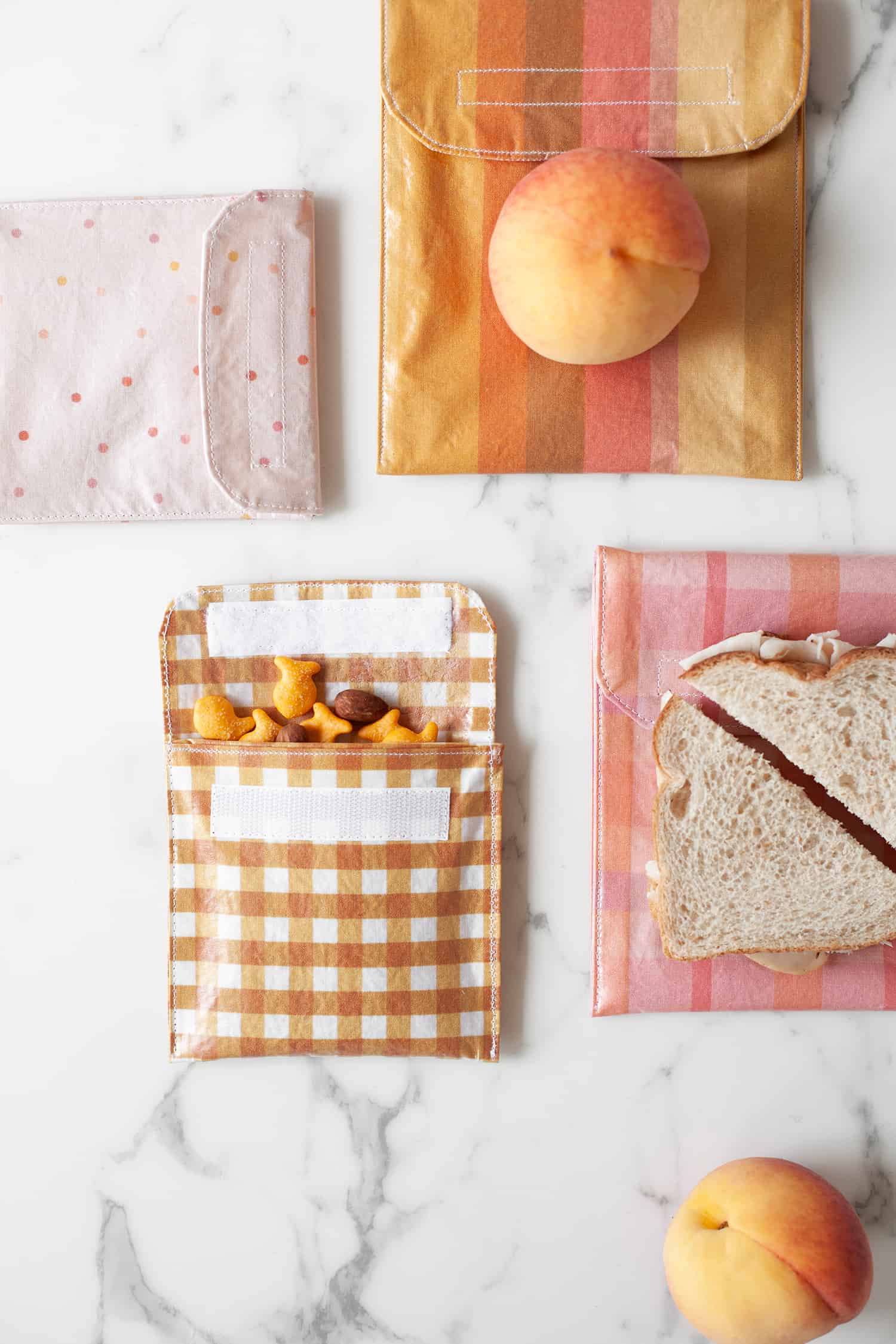
These reusable sandwich and snack bags are made out of cotton fabric from the A Beautiful Mess Flower Market fabric line. I added a vinyl coating to them to make them durable and easy to clean.
Check out how simple they are to make below!
Supplies:
–cotton fabric that has been washed, ironed, and cut into pieces (two 5″ x 12″ pieces for snack bags, two 7″ x 16.5″ pieces for sandwich bags)
–vinyl iron-on interfacing
–hook and loop strips
–straight pins
-iron
–sharp scissors or rotary cutter
-sewing machine and coordinating thread
Step One: Cut pieces of the vinyl interfacing to be 1/4″ smaller than your pieces of cotton fabric.
Step Two: Follow the manufacturer’s instructions to fuse the vinyl to your fabric. Be sure your fabric has been washed and ironed before cutting into the pieces you’ll need, as described in the supplies list of this post.
To fuse my vinyl to the fabric, I peeled off the paper backing, placed the vinyl onto the right side of my fabric, replaced the paper backing, and pressed with a hot iron (no steam) for eight seconds.
Then, I flipped the fabric wrong side up and pressed again for eight seconds.
Be sure to keep one of your larger paper backs from the vinyl adhesion process. You’ll use it in step six, and possibly later in the maintenance of your reusable sandwich bags!
Step Three: After each of your cotton pieces have been coated with vinyl, you’ll want to make rounded corners on one side of each fabric strip. I used round objects from my home as a template for this.
Step Four: Arrange your fabric pieces right sides together and pin very closely to the edges. You’ll be stitching 1/4″ around the border, so make sure the pin holes will be hidden within that seam allowance.
You don’t want to poke holes in the visible vinyl.
Step Five: Sew along the border of the pinned fabric pieces, removing the pins as you go. Do not sew on the short flat edge.
Only sew along the two long sides and the one rounded side. You’re leaving open the non-rounded side to flip the fabric right-side-out.
Step Six: Clip the corners of your rounded edge as shown above, then flip the fabric right side out.
When you flip your vinyl coated fabric right side out, you will heavily crinkle the vinyl in the process. Don’t panic! Simply use a reserved piece of paper backing from the vinyl you used in step two and iron the vinyl (with the paper barrier) to get out the wrinkles.
Just be sure not to iron for more than a few seconds, or the vinyl will begin to degrade and come off onto the paper backing. Definitely do not use a hot iron directly on the vinyl!
Step Seven: Close up the open flat edge of your fabric with a simple straight stitch. Then, add pieces of hook and loop strips as shown above. I used two straight pins near the edge of each hook and loop strip to keep them in place as I sewed them.
Step Eight: Now, fold the fabric as shown above and stitch closely to the edge of the fabric to close up the sides of the bag. You’re going to begin by going up the left side, around the top flap, and then back down the right side of the bag.
School hasn’t started for us yet, but my kids were already excited to see these new reusable sandwich and snack bags in their favorite colors and fun patterns.
My littlest was able to easily open and close the bags herself, which was not the case with some snap-lid containers and reusable Ziplock bags we’ve tried in the past. Cute and easy to use? Win-win!
How Do You Keep The Bags Clean?
When it comes to washing these little reusable snack bags, you’ll want to stick with lukewarm water and a non-abrasive sponge or washcloth.
Let them air dry then use again and again forever! If your bags ever get really crumpled looking, just use some of the paper from the vinyl adhesive process and iron the vinyl smooth again. Do not use an iron directly on the vinyl.
How cute do these little guys look?! This was such a fun and useful project, I’m already thinking about other ways I can use vinyl-coated cotton to make reusable version of disposable items. – Mandi
Looking for more reusable projects? Check out …
Love this post? Sign up for our newsletter for more ideas!
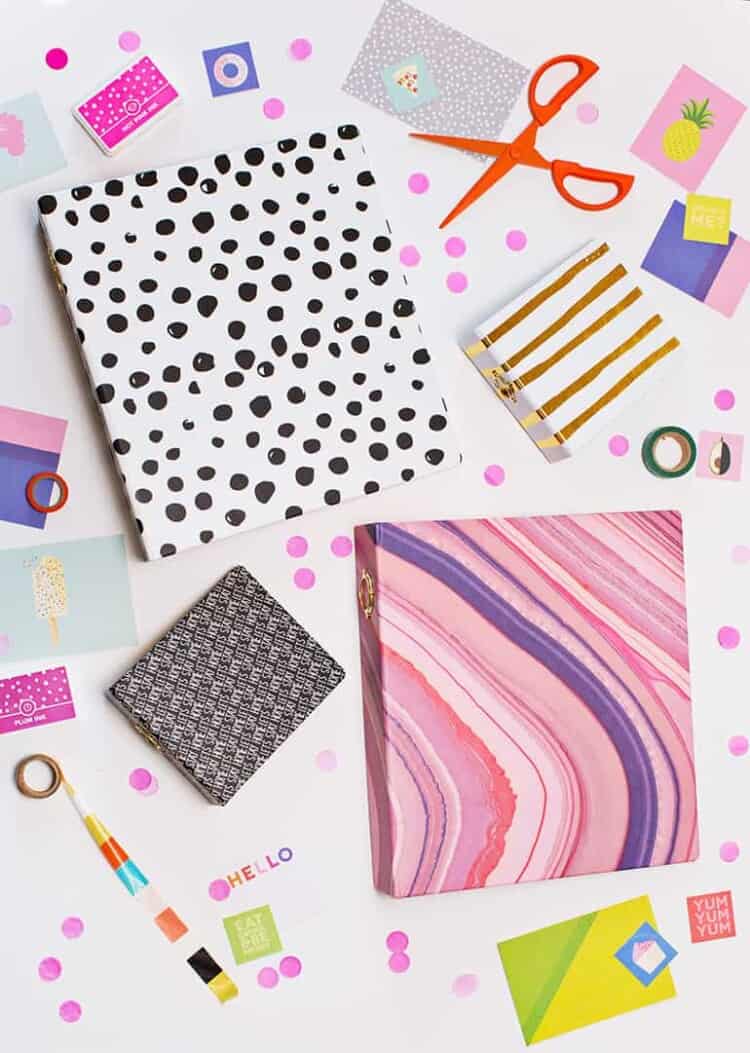
Get creative ideas for recipes, crafts, decor, and more in your inbox!
 Get the How-To
Get the How-To
Supplies
- cotton fabric that has been washed (ironed, and cut into pieces (two 5″ x 12″ pieces for snack bags, two 7″ x 16.5″ pieces for sandwich bags)
- vinyl iron-on interfacing
- hook and loop strips
- straight pins
Equipment
- 1 sewing machine + coordinating thread
- 1 pair of sharp scissors or rotary cutter
- 1 iron
Instructions
- Step One: Cut pieces of the vinyl interfacing to be 1/4″ smaller than your pieces of cotton fabric.Step Two: Follow the manufacturer’s instructions to fuse the vinyl to your fabric. Be sure your fabric has been washed and ironed before cutting into the pieces you’ll need, as described in the supplies list of this post.To fuse my vinyl to the fabric, I peeled off the paper backing, placed the vinyl onto the right side of my fabric, replaced the paper backing, and pressed with a hot iron (no steam) for eight seconds. Then I flipped the fabric wrong side up and pressed again for eight seconds.Be sure to keep one of your larger paper backs from the vinyl adhesion process. You’ll use it in step six, and possibly later in the maintenance of your reusable sandwich bags!
- Step Three: After each of your cotton pieces have been coated with vinyl, you’ll want to make rounded corners on one side of each fabric strip. I used round objects from my home as a template for this.Step Four: Arrange your fabric pieces right sides together and pin very closely to the edges. You’ll be stitching 1/4″ around the border, so make sure the pin holes will be hidden within that seam allowance. You don’t want to poke holes in the visible vinyl.
- Step Five: Sew along the border of the pinned fabric pieces, removing the pins as you go. Do not sew on the short flat edge. Only sew along the two long sides and the one rounded side. You’re leaving open the non-rounded side to flip the fabric right side out.
- Step Six: Clip the corners of your rounded edge as shown above, then flip the fabric right side out.When you flip your vinyl coated fabric right side out, you will heavily crinkle the vinyl in the process. Don’t panic! Simply use a reserved piece of paper backing from the vinyl you used in step two and iron the vinyl (with the paper barrier) to get out the wrinkles. Just be sure not to iron for more than a few seconds, or the vinyl will begin to degrade and come off onto the paper backing. Definitely do not use a hot iron directly on the vinyl!
- Step Seven: Close up the open flat edge of your fabric with a simple straight stitch. Then add pieces of hook and loop strips as shown above. I used two straight pins near the edge of each hook and loop strip to keep them in place as I sewed them.
- Step Eight: Now fold the fabric as shown above and stitch closely to the edge of the fabric to close up the sides of the bag. You’re going to begin by going up the left side, around the top flap, and then back down the right side of the bag.
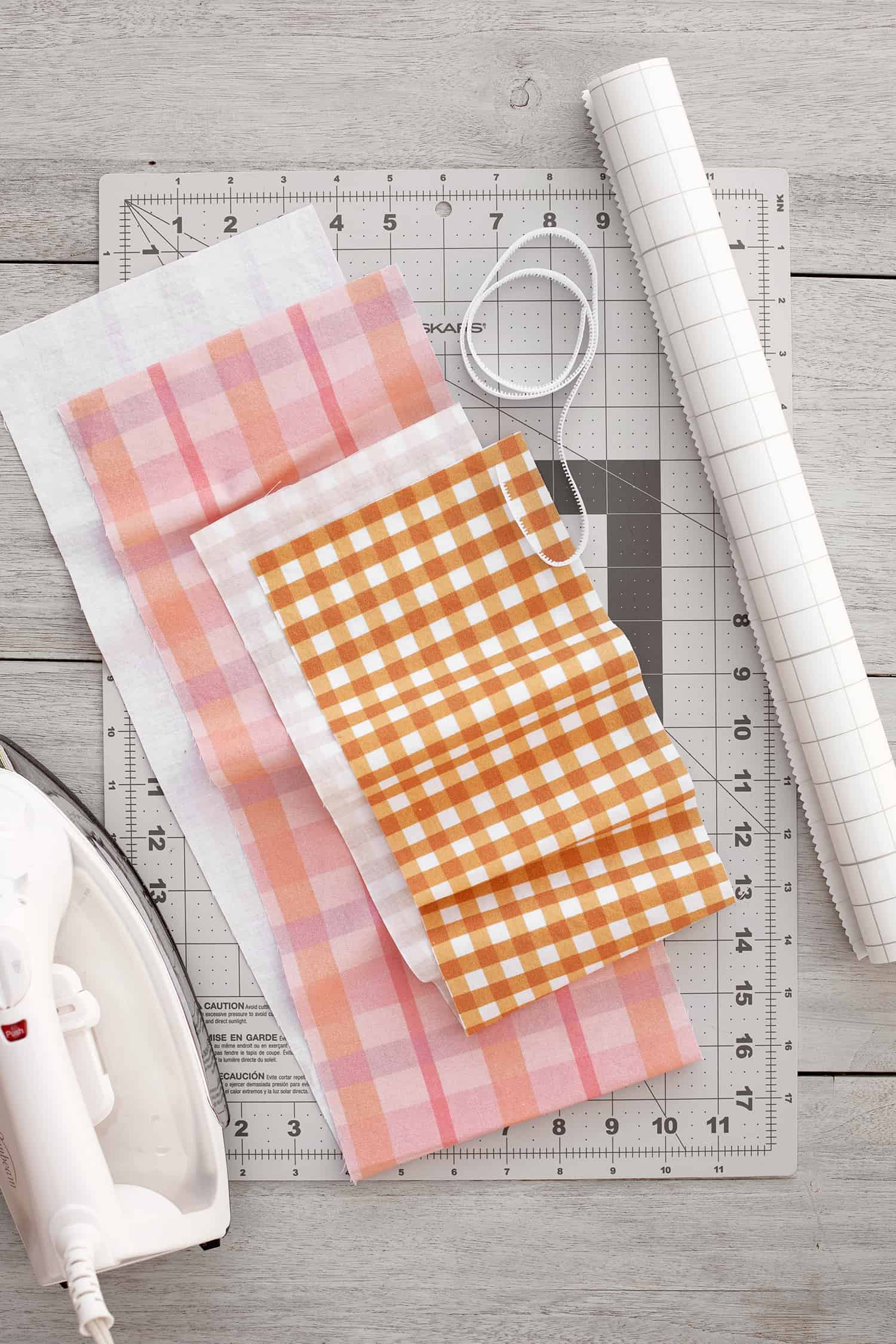
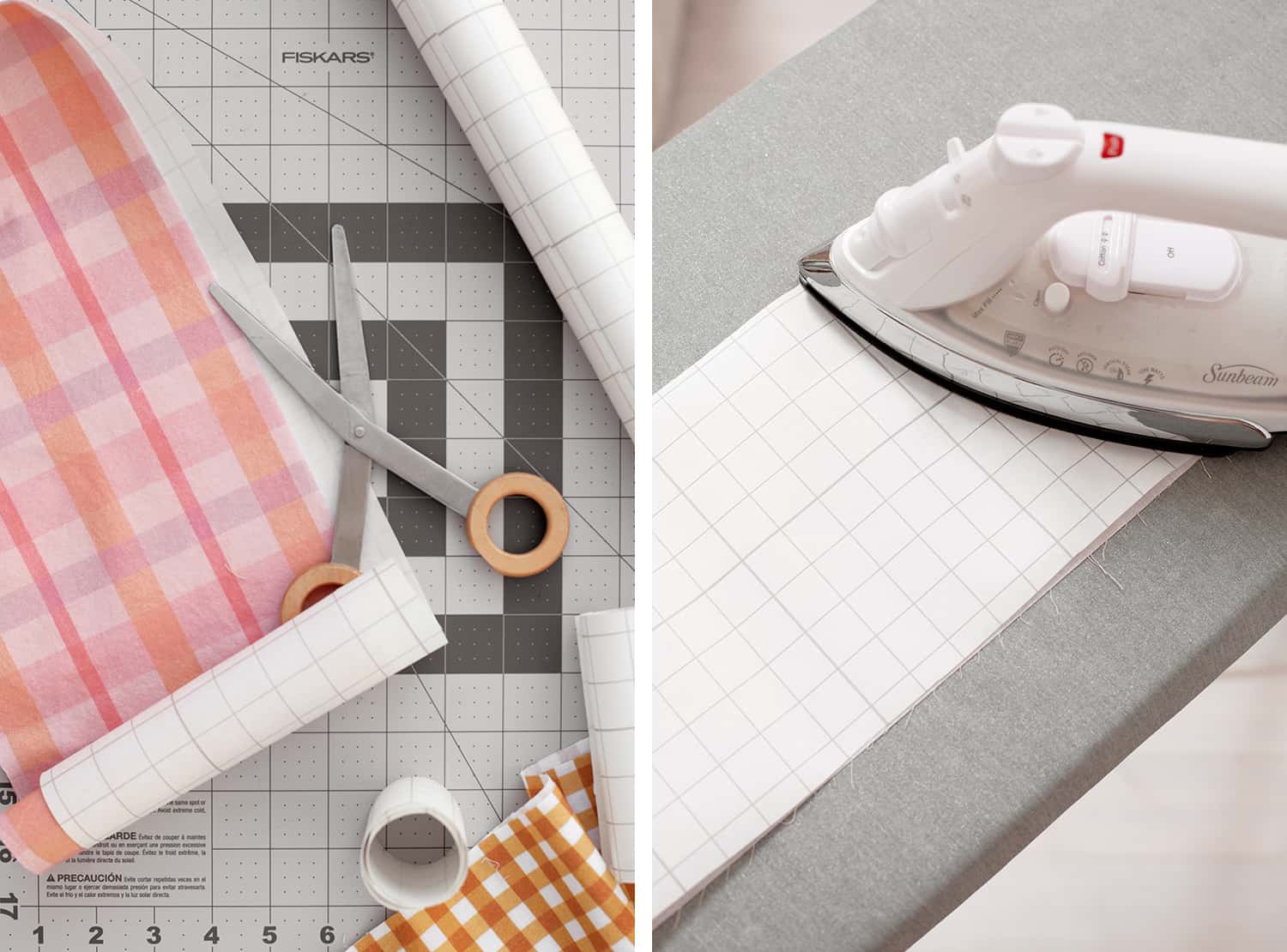
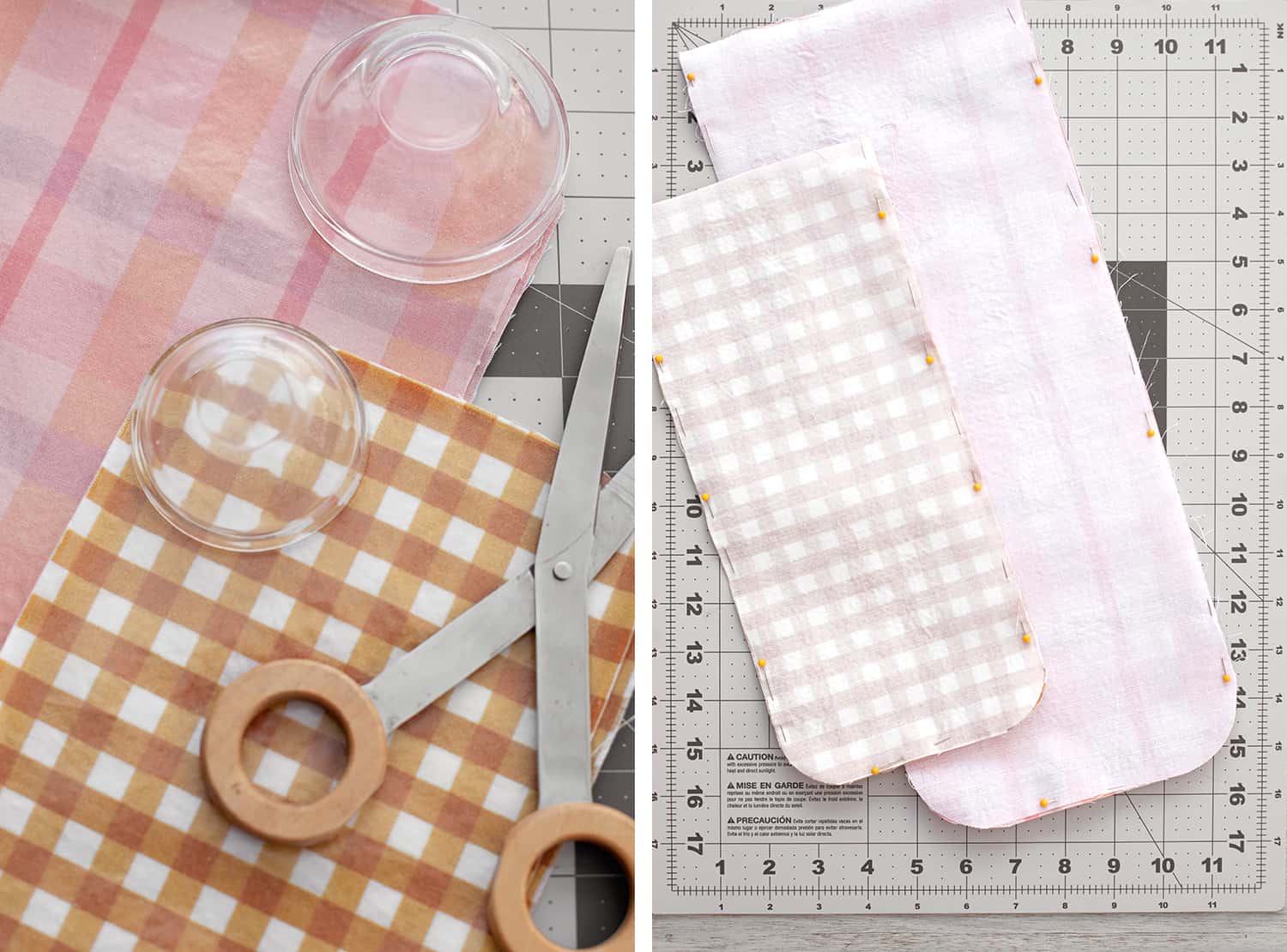
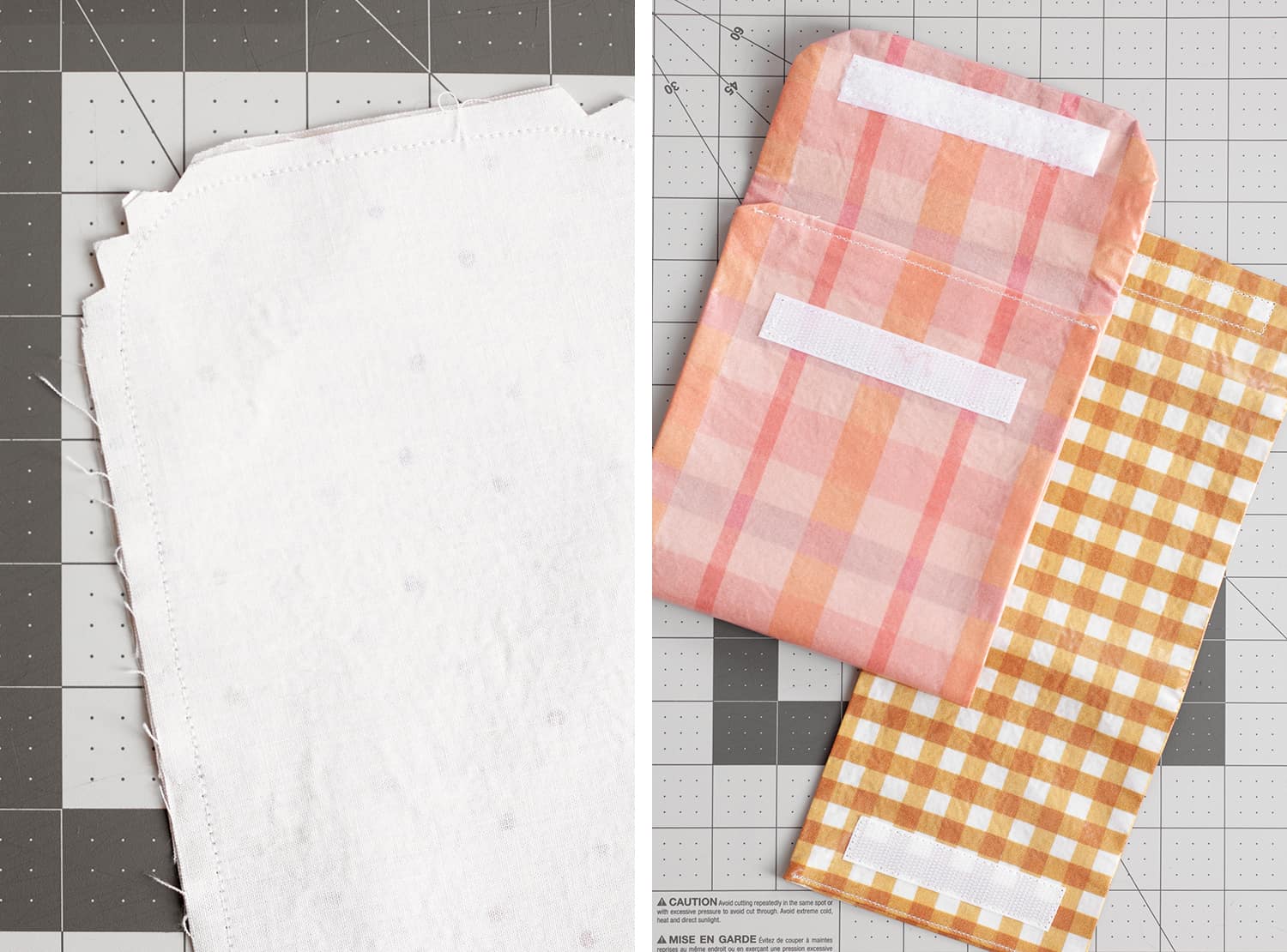
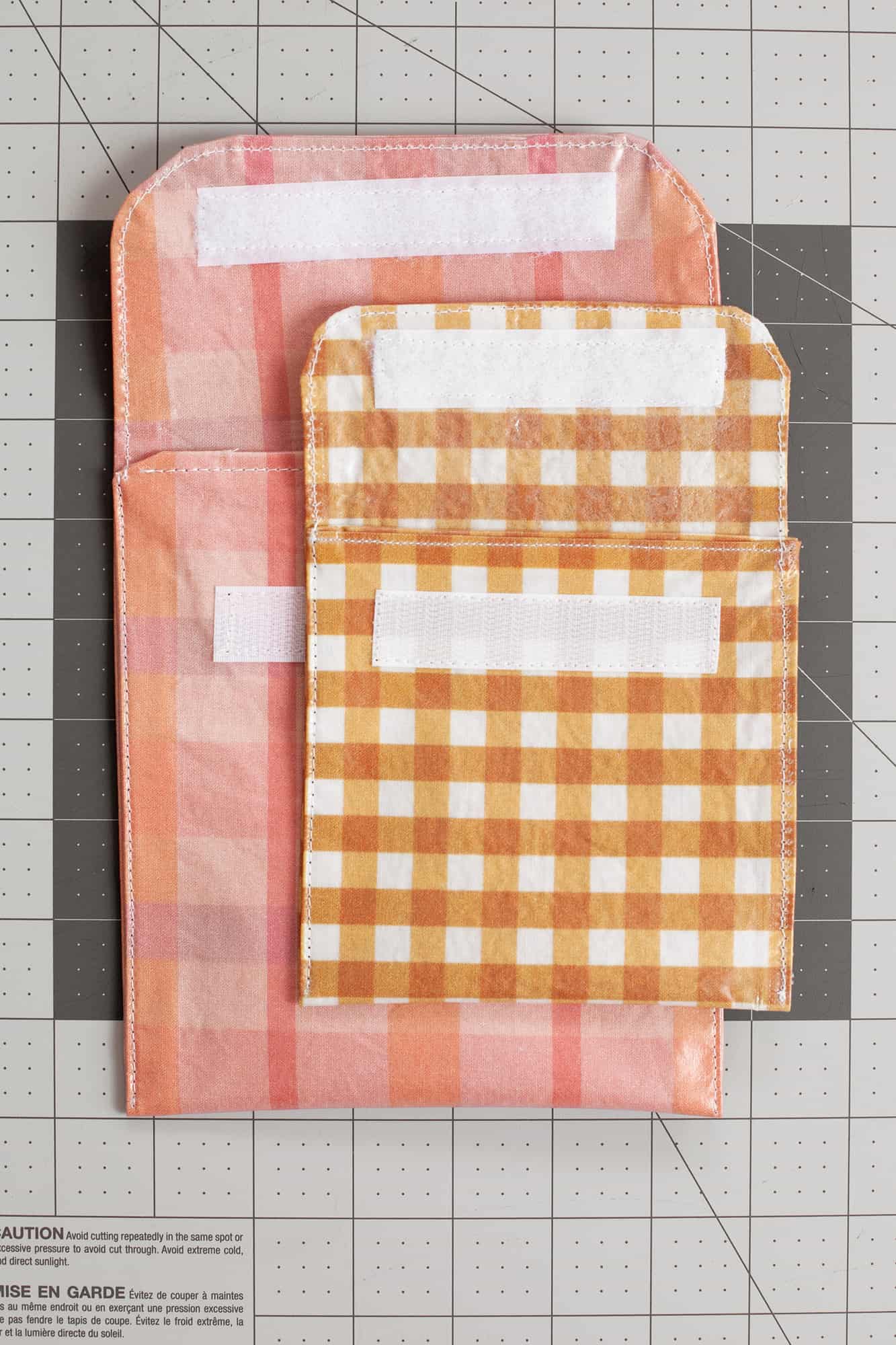
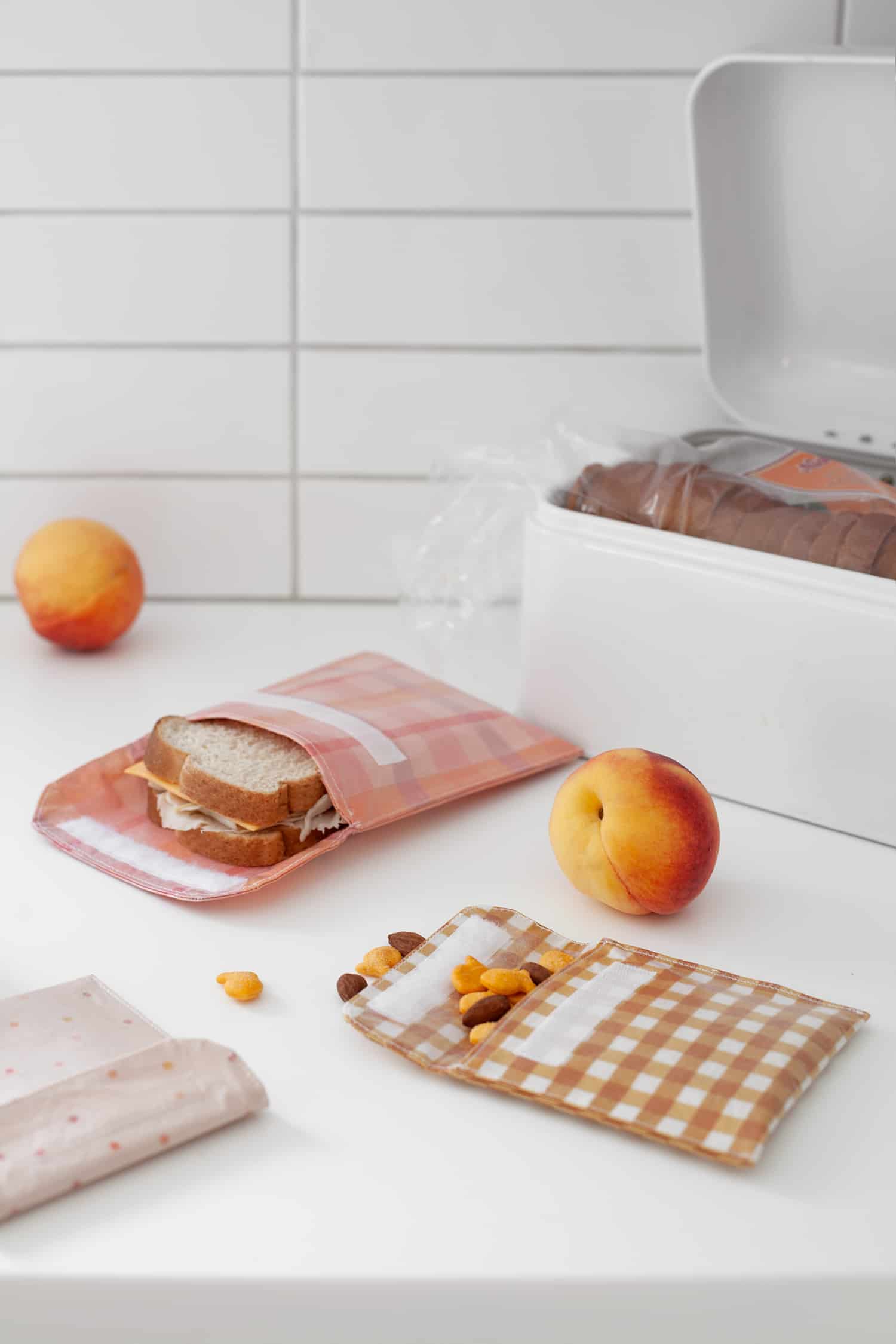
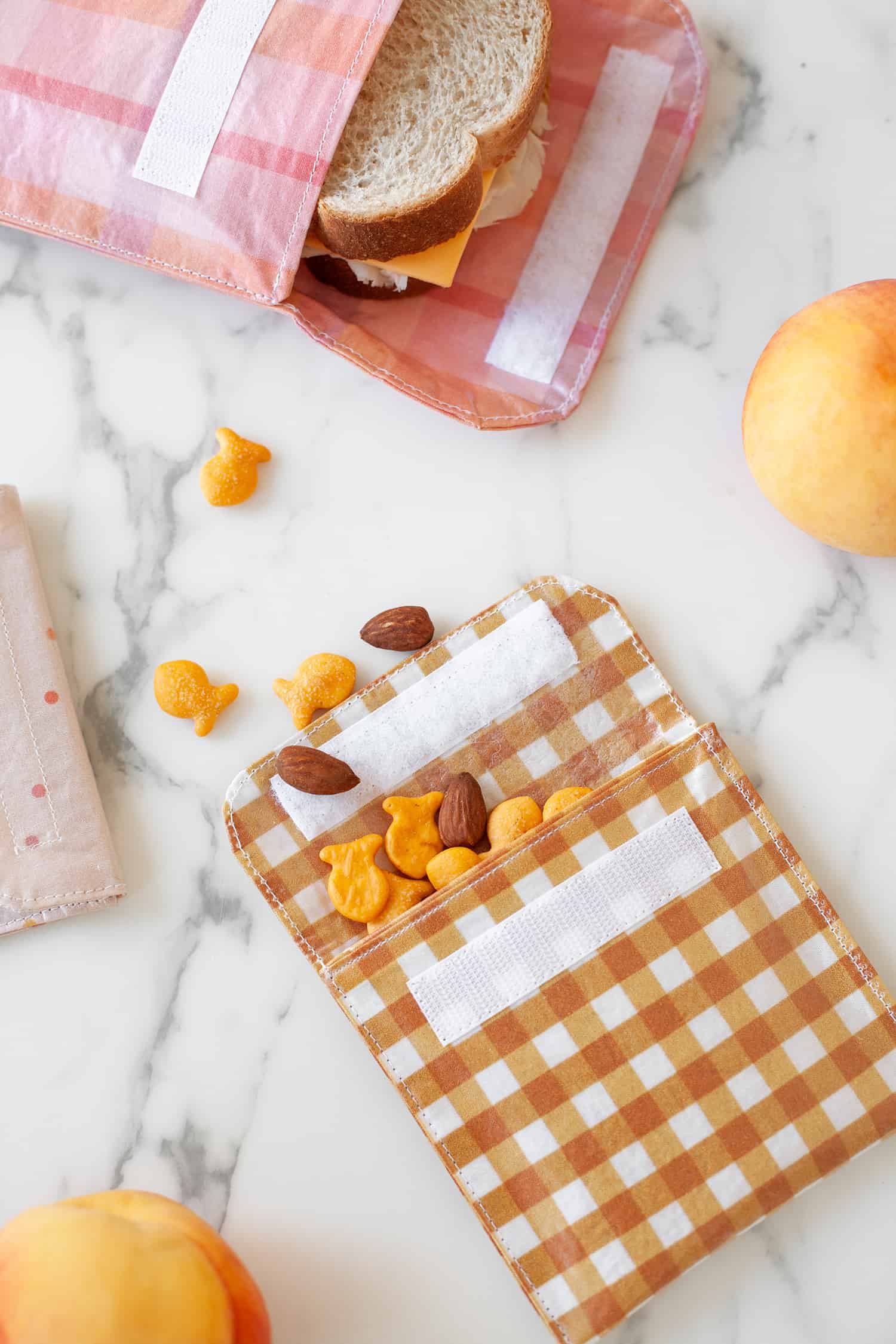
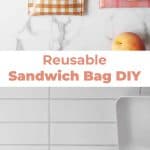
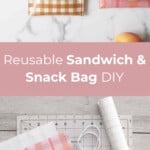
Hi Victoria! Stasher silicone bags are freezer safe. I used them in the freezer. If you are looking for a fabric idea to reuse, you may want to try sandwich wraps instead of bags, so all corners are closed up with no air getting in. They are usually 14×14 square with velcro or make the bags a little longer and put the velcro lower so the flap folds all the way down reducing air into the bag. You can also stack them in a freezer safe glass container in the freezer as well. A little more time to open, grab, and close, but not too much. PUL is freezer safe as well, but make sure it has been certified foodsafe, not all PUL fabric is made the same.
Hello! These bags are so cute! Could you suggest some shops for cute fabrics like that? Thank you!
Totally loving how you personalized this reuseable sandwich bags with some embroidery sewing! The colors just pop and the theme is super fun! Actually, I recently purchased a Brother XM2701 sewing machine and learning new things.
Loved this idea. When I went to the link for the vinyl and looks like it is not BPA free.
these are genius!
These are so cute!! I love them!
-Kate
https://daysofkate.com/
i loooove your enviromentally friendly posts and these are so cute! i was frustrated by constant product pushing and the consumerist approach of most blogs so i finally started my own. i share ideas for living creatively, mindfully and sustainably here: https://tps-steph.blogspot.com/search/label/sustainability
Thanks for sharing this tutorial, Elsie and Emma!
As a fan of sustainable living and reusable packages myself, I’m so glad to find a perfect solution – we used containers for my boy’s school sandwiches before.
Also, as another option, have you ever tried to make beeswax cotton food wrap?
Hi Lori! We have a tutorial for DIY beeswax food wraps here: https://abeautifulmess.com/2018/08/make-your-own-beeswax-food-wraps.html 🙂
I really like your tutorial and all step by step things that you have covered, although this would be my wife domain but they look so cute and easy to make that I think i will be trying my hands on them.
Hate to be THAT GUY….. But vinyl is kinda iffy when it comes to food safety. 🙁
Reckon one could wrap sandwich in paper…then insert into vinyl pocket…of course, that’s another layer of waste & time, but might ease the safety concern.
Worried about food safety as well
Was at JoAnne’s asking and they were u sure too…..
Anyone?
You might want to check out this fabric to line the inside:
https://www.wazoodle.com/fabrics/procare-waterproof-fabric/procare36.html
Love this tuto! I’ll make one for me 🙂
This is a great DIY! And I love the environmentally-friendly factor.
xoKaelen | https://darlingmarcelle.com
These sandwich bags are so cute, and much better for the environment than buying plastic-wrapped sandwiches or covering them in clingfilm.
Sarah xo Oomph London
I’m going to try this! Quick clarification… Is the vinyl on the inside or outside? In my mind, it seems like it should be inside, but the instructions make me think you put it on the outside. Can you help a confused sister out? Haha! Thanks!
Yes! I have the same question!
I think most things I have read say to put it on the outside but I personally put it on the inside, because I think thevinyl cleans better than the cloth. So I kerp the cloth on the outside. Note: make sure if you are using iron on vinyl that you buy the food safe stuff. Pellon 875 is food safe, or you can use Babyville PUL material which is also food safe.
I know it’s nearly a year later but I thought I’d comment in case anyone else has the same question because I did at first too! but since you are costing both pieces of the fabric on the “right” sides(the front patterned side of the fabric) and then sewing both pieces right sides together and turning out, the “right” side of each piece of fabric will be both the outside and inside of the pouch, meaning the vinyl will also be on the inside and outside of the pouch. I hope this explanation helps a little!
As someone who uses similar bags, I’d definitely make sure that your daughter uses a lunch box that has some shape to it, otherwise the sandwich will be squished and not eaten, if your kids are anything like mine.
I just found your blog and I absolutely love it! Your sandwich and snack holders are the best DIY I’ve come across. I’m excited to get started on making these.
Ahh love these! Question – are these freezer safe or will they dry out food? I currently use biodegradable sandwich bags, make sandwiches in bulk and freeze them. In the morning I grab a couple for lunch and by noon they are thawed! I would love to try using my own homemade bags if they hold up well in the freezer. So far, I haven’t been able to find a reusable alternative to the biodegradable sandwich bags.
I’m sure they would be fine, but there are tons of alternative reusable options! Check out stasher bags, or PUL lined snack bags on Etsy (my personal favorite is Evergreen & Mustard). I’ve been using them for over 2 years and they are as good as new. I expect to be able to use them for at least another 5-10 years.
Thanks for the tips! Are these alternatives to freezer bags, though? Freezer storage is my only use for sandwich bags and I haven’t found a good alternative for that purpose. I checked out their Etsy page and I’m not seeing anything about freezer safe.
This is great! I really like the look of the sandwich bags too, such a classic colour and pattern. 🙂
Charmaine Ng | Architecture & Lifestyle Blog
http://charmainenyw.com
These are really cute and I agree with a first grader over here as well I feel like lunch packing this year will be a breeze (it was just a WHOLE process that we all had to get used to last year) ????